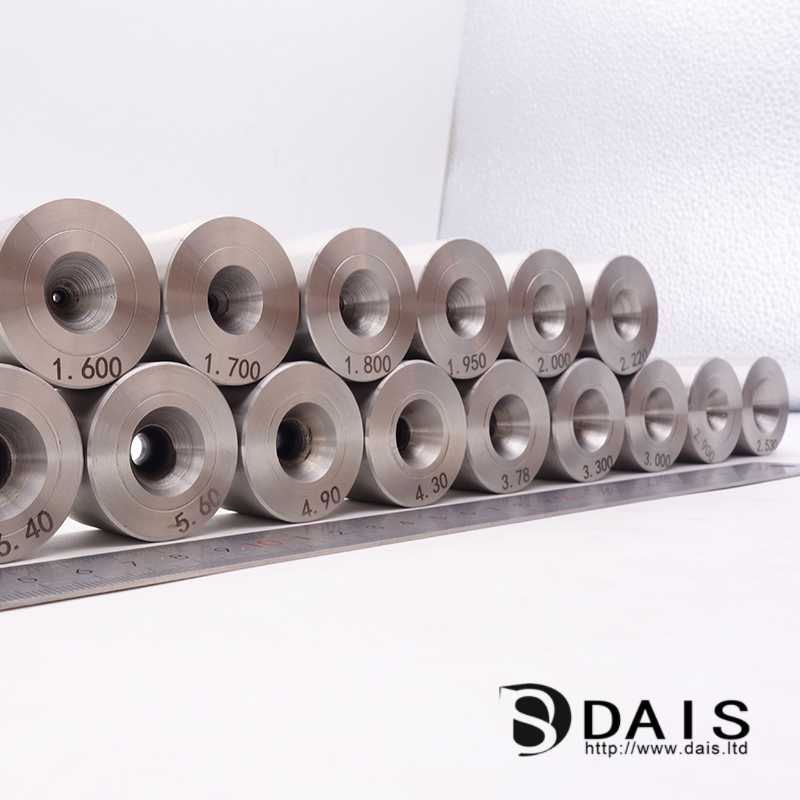Search

ADD:Building 123, Phase 3, Enterprise Base, No. 1 Lianhua Street, High-tech Industrial Development Zone, Zhengzhou, Henan, China
MOB.: +86-15517518512
MOB.: +86-15515520695
E-MAIL: admin@dais.ltd

According to statistics, the annual die consumption of China's machining industry alone is as high as five times the total price of machine tools. It can be seen that the large consumption of molds not only directly increases production costs, but also results in frequent shutdowns due to frequent mold replacements, leading to greater economic losses. The mold repair technology undoubtedly prolongs the service life of the wire drawing die and has good economic benefits. It can be used to strengthen and repair the surface of various metal-based alloys and other metal material molds and workpieces, and greatly improve the service life.
Here we need to pay attention that although the machine will give an alarm when the operation is wrong, sometimes the pits on the mold surface may be burned out! Therefore, be sure to specify specific steps for drawing die repair:
1. Cleanup: Perform simple cleanup at the place where maintenance is needed to remove oil and impurities, otherwise the power supply and sparks will be poor during the maintenance process.
2. Rolling speed: It is recommended that the rotation speed of the welding gun be closely aligned with the welding output to form a welding point on the auxiliary material, and the rotation speed should not be too fast, otherwise there will be a small amount of auxiliary material after repairing and polishing, the material will peel off And micropores.
3. The contact point between the welding gun and the mold: the smaller the contact area between the welding gun and the auxiliary material, the better the pressure, the higher the current density (the more concentrated the current), the greater the welding heat and the relative degree of the supplementary material. The power data shown in the housing of the supplementary material is the power requirement when the standard φ5mm electrode rod is in contact with the flat supplementary material. The larger the contact area of the same power welding head is, the larger the current spread is, and the effect after supplementation is not ideal. In this process, it is easy to cause the melting of the supplementary material and the surface of the cavity.
Posture 4. Posture and pressure: When repairing, the surface of the welding gun and the mold should preferably be at an angle of 45 degrees, and a certain pressure should be applied to the welding gun. The pressure depends on the roughness of the defective surface and is not smooth.
5. Complex cavity: accurate, multi-angle, complex surface repair, with precise power, thinner materials are better for multiple repairs, and the normal state is suitable for larger repair defects.
6. Oxidized surface repair:
Process: clean up impurities ---> remove oxide layer ---> low power edge repair ---> fill ---> polishing
1) Before repairing the oxidation mold, you must use a power tool to remove the nitride layer, and then weld the auxiliary material directly to the steel substrate, otherwise the oxide layer will be isolated between the auxiliary material and the substrate, and it is easy to peel off.
2) Try to use small-power thin materials to repair the edge part to reduce and reduce the edge marks caused by the heat generated during the repair process.
7. After the repair point of the wire drawing die is polished, there are slight protrusions on the outer ring. The reason is that the heat generated by the workpiece during the repair process hardens the workpiece. Materials with good quenching properties are particularly noticeable. The edge section uses low power. Thin materials can avoid this phenomenon. (The method refers to the oxidation mold repair).
8. The indentation after repair and polishing is caused by the fact that the auxiliary material is harder than the base material, so the use of auxiliary materials with hardness similar to the base material can be avoided.